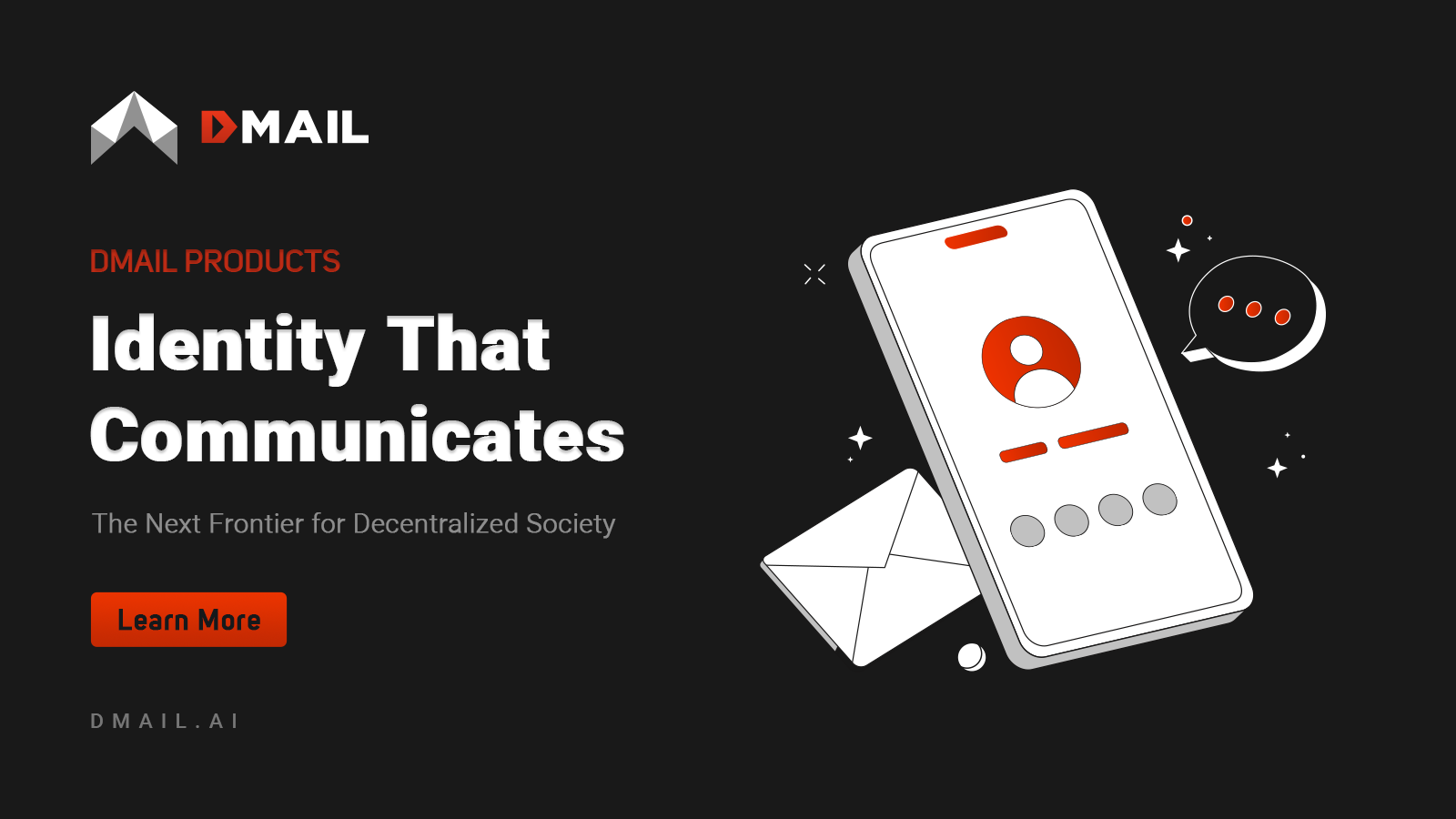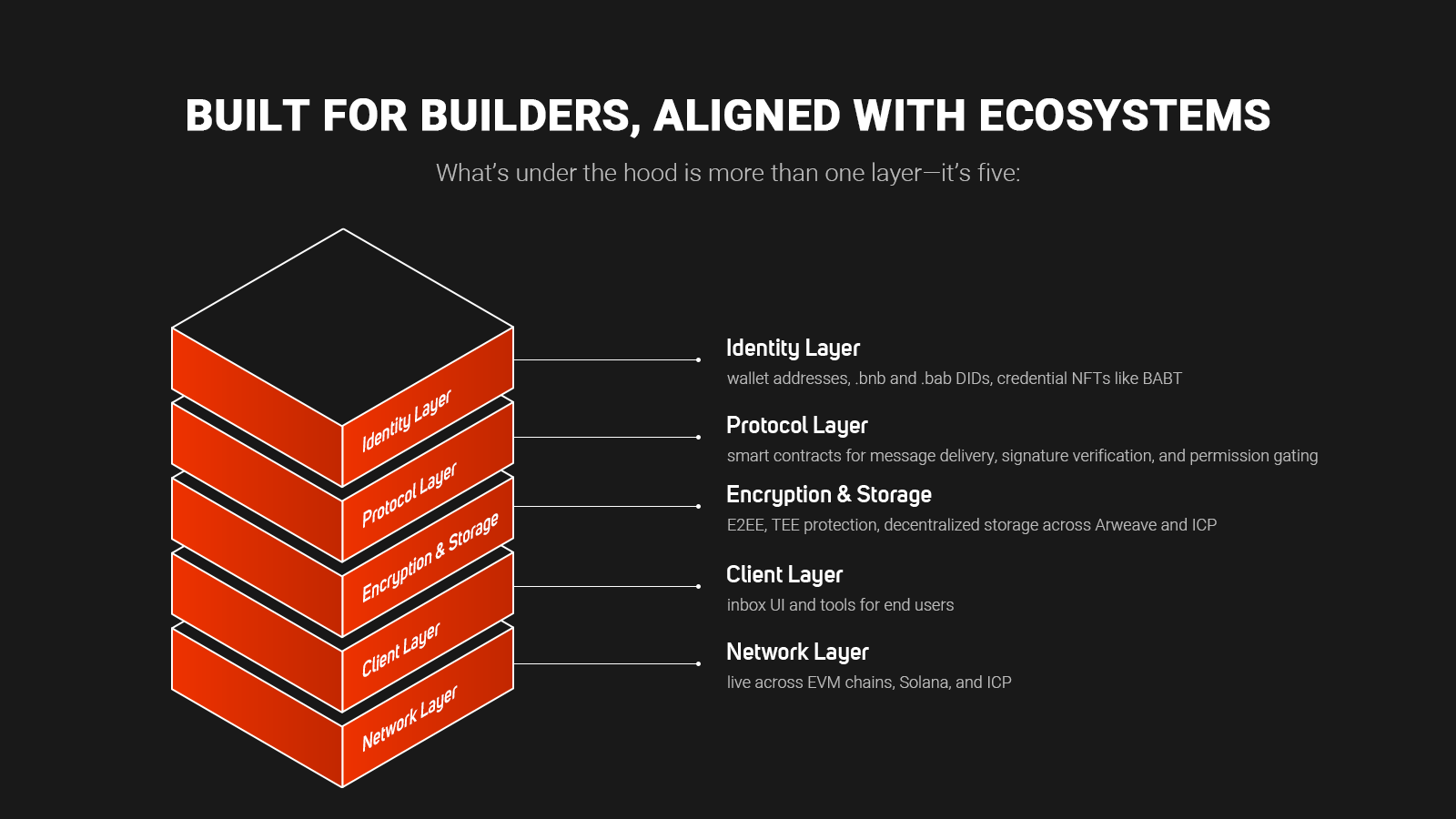Identity That Communicates: The Next Frontier for Decentralized Society
As the DeSoc conversation evolves, the focus is shifting from vision to execution and Dmail Network is at the very center of that discussion.

BNB Hack Workshop with XPIN & Dmail https://t.co/BVTSyS8eYO
— BNB Chain (@BNBCHAIN) July 25, 2025
From Ownership to Interaction
Web3 made us owners. But it didn’t yet make us communicators.
Across the decentralized landscape, identities are scattered—wallets, DIDs, NFT domains—yet our interactions still rely on centralized tools. If Decentralized Society (DeSoc) is to fulfill its promise, then our identities need the power to speak, verify, and coordinate. Messaging isn’t a luxury—it’s the connective tissue of every community, DAO, and protocol.
And it needs to be on-chain.
The Communication Layer DeSoc Was Missing
At DMAIL, we asked a simple question:
What happens when your identity can message—and your messages are sovereign?
The result wasn’t a theory. It was a working infrastructure. A fully live, cross-chain encrypted messaging protocol built on smart contracts, decentralized storage, and identity-native addressing.
Whether you message through your wallet, DID, NFT domain, or even Web2 email, the system is the same:
Secure. Encrypted. Verifiable. On-chain.
With over 170 million on-chain transactions, 2 million+ active users, and support across 39 networks, this isn't a proposal—it’s a growing standard.
Solving the Silent Problems in DeSoc
Decentralized identity without communication is incomplete. Today’s DID and NFT assets lack utility beyond display. Notifications rely on Discord threads. DAO updates are buried in Telegram feeds. KYC processes remain complex, slow, and invasive.
That’s where programmable messaging meets verifiable identity:
- Dmail domains and DIDs become active inboxes
- BNB-native NFTs act as lightweight KYC for gated access
- An open Message Protocol lets dApps send on-chain notifications to real users, verified by real credentials
- Custom APIs ensure token claims, storage offers, and campaign invites never get missed
It’s not just about privacy or encryption—it’s about precision, trust, and usability in the way Web3 talks to its users.

Built for Builders, Aligned with Ecosystems
What’s under the hood is more than one layer—it’s five:
- Identity Layer: wallet addresses, .bnb and .bab DIDs, credential NFTs like BABT
- Protocol Layer: smart contracts for message delivery, signature verification, and permission gating
- Encryption & Storage: E2EE, TEE protection, decentralized storage across Arweave and ICP
- Client Layer: inbox UI and tools for end users
- Network Layer: live across EVM chains, Solana, and ICP
This layered architecture was designed to support developers building the next generation of on-chain applications—from gated cloud storage to behavior-scored reputation systems and real-time DAO tooling.
Messaging with Meaning
As the DeSoc conversation evolves, the focus is shifting from vision to execution. The infrastructure already exists to:
- Turn a wallet into a messaging channel
- Use NFT credentials for access control and lightweight KYC
- Send encrypted updates directly into user-owned inboxes
- Build marketing, governance, and community tools on messaging rails that respect privacy and sovereignty
And most importantly:
Everything is open, verifiable, and composable for any developer to integrate.
The Quiet Revolution Is Already Live
While others are still theorizing about the potential of DeSoc, the messaging layer of that society is already running.
So if you're building for identity, for governance, or for users—you don’t need to start from scratch.
You just need to plug in.

Connect with Dmail: Website | Twitter | Discord | Github | Telegram


Comments ()